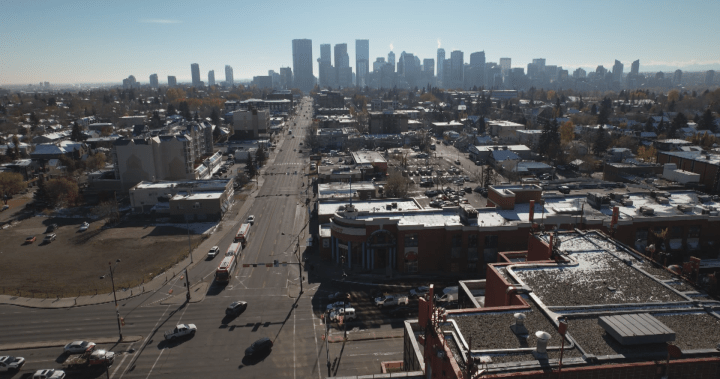Advocates of Calgary’s Green Line LRT are urging the city to prioritize transit-first changes to Centre Street in anticipation of the LRT project’s extension to north Calgary communities. The LRT on the Green Foundation and the Crescent Heights Village Business Improvement Area have proposed several changes to Centre Street, including the permanent removal of rush-hour lane reversals, the designation of bus-only lanes during rush hour, public realm enhancements, and new traffic signals to improve pedestrian crossings. According to Jeff Binks, the head of LRT on the Green, Centre Street is currently congested with buses stuck in traffic, hindering the mobility of tens of thousands of Calgarians each day. The second phase of the Green Line project would see the train line extending across the Bow River and running up Centre Street to north central communities, but the future of the project is uncertain due to the province seeking a new alignment for the southeast and downtown phase.
Binks and other advocates are calling on the City of Calgary to adopt a transit-first approach to Centre Street in the interim. Camie Leard, executive director of the Crescent Heights Village BIA, believes that removing lane reversals and creating bus-only lanes would improve pedestrian safety, enhance mobility, and attract new investments to the area. The public realm upgrades that were originally planned for the Green Line’s northern alignment have been delayed, leading to a lack of investment and deteriorating infrastructure in the area. The city officials have acknowledged the proposal from LRT on the Green and the Crescent Heights Village BIA, recognizing that Centre Street is the busiest transit corridor in Calgary with over 1,000 buses traveling daily. The city is currently working on new bus stations along Centre Street to support the future MAX route and any potential dedicated bus lanes in the future.
City officials have stated that the current improvements along Centre Street are based on recommendations from the North Central BRT Functional Planning Study completed in 2021. Additionally, city council has approved $60 million in funding for bus-rapid transit in north Calgary in 2023, focusing on areas north of 16 Avenue N. However, advocates like Binks emphasize the need to address traffic congestion south of 16th Avenue as well to ensure the effectiveness of these investments. Ward 7 Coun. Terry Wong, who represents the stretch of Centre Street in question, is open to studying the proposed changes but emphasizes the importance of consulting with the community before moving forward. He expressed concerns about potential traffic congestion during rush hour if a lane is designated for bus-only use, highlighting the need to balance the mobility needs of transit riders with the concerns of other road users.
Overall, advocates for the Green Line LRT extension to north Calgary communities are pushing for transit-first changes to Centre Street to improve mobility, enhance pedestrian safety, and attract new investments to the area. While the second phase of the Green Line project remains uncertain, advocates believe that prioritizing transit improvements on Centre Street is essential to support the future LRT expansion. City officials have acknowledged the need for enhancing transit infrastructure along Centre Street, including new bus stations and potential dedicated bus lanes. While some concerns have been raised about the impact of these changes on traffic flow, supporters argue that a transit-first approach is necessary to address the current challenges faced by Calgarians using public transportation along Centre Street. Consultation with the community and careful consideration of all stakeholders will be key in determining the best path forward for implementing these proposed changes.


